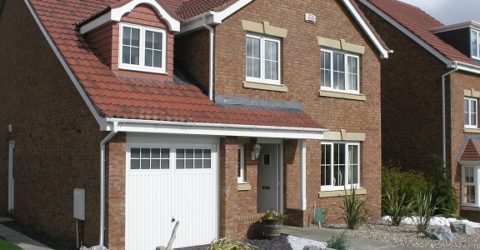What is build to rent, and how does it affect broadband access?
Build to rent schemes are growing in popularity, and they offer tenants a shortcut to the fast lane of the internet superhighway

Historically, property construction took two main forms.
There was social housing provision, where councils or housing associations would construct properties for registered tenants.
Then there was private housing, where developers would market homes to anyone with sufficient financial resources to acquire ownership outright, or through a mortgage loan. Some of these properties would be rented out by landlords, but they remained privately owned.
Either of these forms could have an impact on the types of broadband offers available to residents.
In recent years, a third path has opened up. Build to rent has introduced an entirely new model of property occupancy, and one that’s inextricably intertwined with broadband provision.
So what does a BTR property offer in terms of internet access?
Build it and they will come
As the name suggests, a build to rent scheme involves a developer constructing properties which are occupied by individuals, couples or families on long-term tenancies.
These dwellings can’t be bought, and they aren’t the province of a council or housing association.
MoreMany new builds still lacking full-fibre connections
Nor are they acquired on a piecemeal basis by landlords – they’re let out en masse by either the builder or a specialist sub-contractor.
The BTR market is growing by 40 per cent year on year, as house prices remain stubbornly high in a post-pandemic market characterised by price growth, sealed-bid offers and gazumping.
With over 150,000 homes scheduled for completion, the soaring number of BTR homes is a welcome alternative to downmarket social housing or take-your-chances private rentals.
Why are these homes synonymous with high-speed broadband?
Because flatted developments enable more homes to be constructed per square metre than houses, most BTR schemes are apartment-oriented.
They’re also usually in urban areas.
By a happy coincidence, urban flatted developments are the most lucrative to service from a broadband company’s perspective.
Rather than digging up existing pavements to service one detached bungalow, a single cable can be pre-laid at the utilities installation stage, serving an entire building.
That might include hundreds of individual dwellings – cost-effective for the broadband company.
Which firms service BTR developments?
As the de facto provider of telecommunications cabling, Openreach services many BTR developments with high-speed cabling.
Full fibre broadband providers also pre-cable new-build apartment developments, ensuring their infrastructure is ready for new occupiers to tap into.
Virgin Media, Gigaclear and Hyperoptic are among the fibre broadband firms servicing the burgeoning BTR market.
Earlier this summer, Hyperoptic launched a site-wide WiFi scheme for BTR developments, enabling residents to remain connected to their own WiFi as they roam around a building.
MoreHow to persuade your landlord to upgrade your internet
Innovations like these represent a key attraction of BTR properties, which tend to offer other modern specifications like high-end kitchen appliances plus low energy costs.
The aspirational young tenants attracted to these long-term leases tend to be tech-savvy, meaning dependable high-speed internet provision is as essential as water and electricity.
The prospect of hyperfast symmetrical upload and download speeds is a real selling feature nowadays, helping to underpin the popularity of modern build to rent developments.






